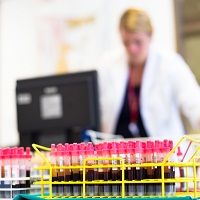Publication
Article
Internal Medicine World Report
Cardiac Biomarker Testing Overused in Emergency Departments
Author(s):
Cardiac biomarker testing is often used in emergency department visits even when there is no suspected symptom of acute coronary syndrome, according to research from UT Southwestern Medical Center.

Cardiac biomarker testing in emergency departments (ED) is common among those without symptoms suggested of acute coronary syndrome (ACS) related symptoms, according to research published in JAMA Internal Medicine.
Researchers from the Division of General Internal Medicine at the UT Southwestern Medical Center in Dallas retrospectively assessed 44,448 ED visits of adults aged 18 years or older in order to determine the use of cardiac biomarker testing overall. The patients were recruited from the 2009 and 2010 National Hospital Ambulatory Medical Care Surveys, which is the probability of ED visits in the United States.
The patients were excluded from the study if they had any of the following characteristics: had been seen in the same ED within the past 72 hours, had been discharged from any hospital within 7 days, had been seen as a follow up visit, had been transferred to another facility, had left against medical advice, had an unclear disposition, or was dead on arrival of died in the ED.
The researchers defined hospitalization as observation stays and visits for all internal medicine and non internal medicine conditions.
The researchers extrapolated from the survey data that there were 169.6 million ED visits in those years, of which 8.8% were individuals with chest pain, 30.1% were among individuals with potential ACS symptoms, and 61.1% were among individuals with no symptoms of ACS. About a quarter of visits had more than 5 other tests or services performed on them during the visit, while two thirds of visits were unrelated to injury or poisoning. Hospitalized individuals were significantly more likely to be older, have a cardiovascular comorbidity, and have a cardiovascular visit diagnosis.
Cardiac biomarker testing occurred in 16.9% of all ED visits during the 2 surveyed years, of which 47% were subsequently hospitalized individuals and in 10% of treat and release patients. The biomarker tests were used in 8.2% of ED visits in the absence of ACS symptoms. However, chest pain was estimated to be present in a quarter of all visits when the individual was biomarker tested. ACS testing was done in 27.4% of patients where guidelines do not recommend diagnostic testing for suspected ACS.
“Biomarker testing was highly prevalent during visits with a high volume of other tests or services rendered during the visit independent of the clinical presentation,” the authors concluded. “The high rate of testing among individuals with low suspicion of ACS is concerning because of the potential increase in health care costs and downstream harms owing to false positive results. Hospitals with higher noninvasive cardiac imaging rates have higher rates of hospitalization and angiography, which may also be true for centers and health care providers with higher rates of cardiac biomarker testing.”






